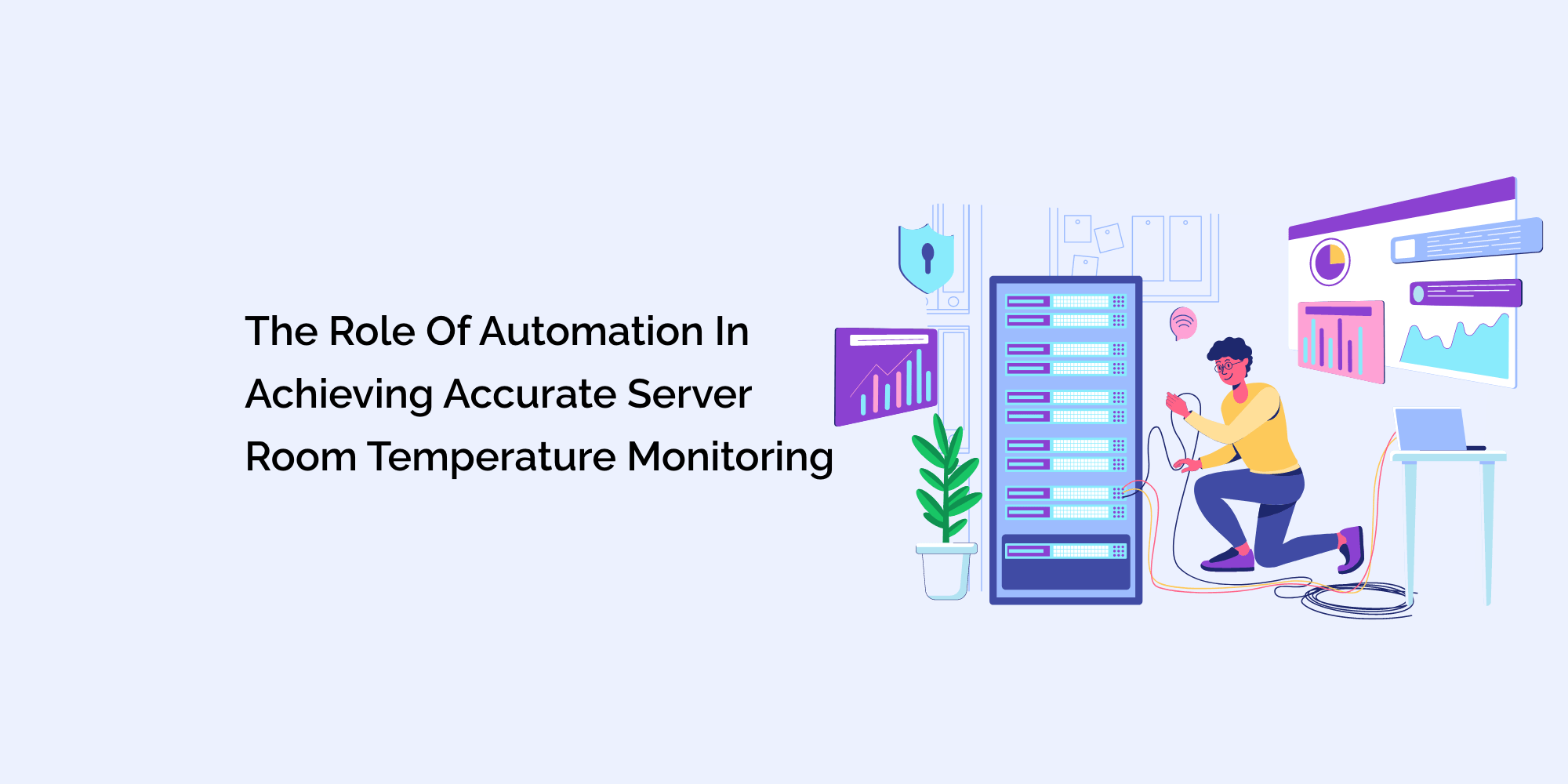Accurate server room temperature monitoring is crucial for maintaining the optimal performance and reliability of data center infrastructure. Manual temperature monitoring processes can be time-consuming, prone to human error, and lack real-time visibility. To overcome these limitations, data center managers are increasingly turning to automation to achieve accurate and efficient temperature monitoring.
In this blog post, we will explore the role of automation in achieving accurate server room temperature monitoring and its benefits for data center operations.
Understanding Automation in Temperature Monitoring
Automation in temperature monitoring involves the use of advanced technologies and systems to collect, analyze, and manage temperature data in real-time. Automated temperature monitoring systems utilize sensors, data acquisition devices, and software applications to streamline the monitoring process. These systems eliminate manual data collection, reduce human error, and provide immediate alerts in case of temperature deviations.
Benefits of Automation in Temperature Monitoring
Automation offers several benefits for accurate server room temperature monitoring. Firstly, it improves accuracy by eliminating the potential for human error in data collection and recording. Automated systems ensure consistent and precise temperature measurements, reducing the risk of false alarms or missed anomalies.
Secondly, automation enhances efficiency by eliminating the need for manual monitoring processes. Real-time temperature data collection and analysis enable proactive response to temperature fluctuations, minimizing downtime and potential equipment failures. Additionally, automation provides continuous monitoring capabilities, allowing for 24/7 surveillance of server room temperatures.
Real-time Alerts and Notifications
One of the key advantages of automation in temperature monitoring is the ability to generate real-time alerts and notifications. Automated systems can be configured to monitor temperature thresholds and trigger immediate alerts if deviations occur. Administrators can receive alerts via email, SMS, or other communication channels, enabling them to take prompt action to address temperature anomalies. Real-time alerts help prevent potential damage to server equipment, reduce downtime, and ensure the continuity of data center operations.
Trend Analysis and Predictive Maintenance
Automation enables data center managers to perform trend analysis and implement predictive maintenance strategies based on temperature data. Automated systems collect and store temperature data over time, allowing for historical analysis and identification of patterns and trends.
By analyzing temperature trends, administrators can anticipate potential issues, optimize cooling systems, and implement proactive maintenance measures. Predictive maintenance helps prevent equipment failures, reduce costs, and maximize the lifespan of server hardware.
Integration with Building Management Systems
Automation in temperature monitoring can be further enhanced by integrating with building management systems (BMS). BMS integration allows for centralized monitoring and control of various environmental factors, including temperature, humidity, and airflow.
By integrating temperature monitoring with the overall building management system, data center managers can have a holistic view of the facility conditions, enabling them to make informed decisions regarding temperature control and optimization.
Remote Access and Monitoring
Automation enables remote access and monitoring of server room temperatures. With automated systems, administrators can monitor temperature data and system status from anywhere, using web-based interfaces or mobile applications. Remote access provides flexibility and convenience, allowing administrators to monitor temperature conditions and respond to alerts in real-time, even when they are not physically present at the data center.
Integration with Incident Management Systems
Automation in temperature monitoring can be integrated with incident management systems, enabling seamless incident tracking and resolution. When temperature anomalies are detected, automated systems can trigger incidents in the incident management system, generating tickets or tasks for the appropriate personnel to investigate and resolve the issue. This integration streamlines the incident response process and ensures proper documentation of temperature-related incidents.
Conclusion
Automation plays a critical role in achieving accurate server room temperature monitoring. By leveraging advanced technologies and systems, data center managers can improve accuracy, efficiency, and reliability in temperature monitoring processes.
The benefits of automation include enhanced accuracy, real-time alerts and notifications, trend analysis for predictive maintenance, integration with building management systems, remote access and monitoring, and integration with incident management systems. By embracing automation, data center managers can ensure accurate and proactive temperature monitoring, minimize downtime, prevent equipment failures, and optimize the performance and reliability of their server infrastructure.








